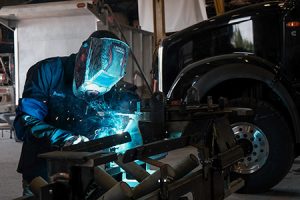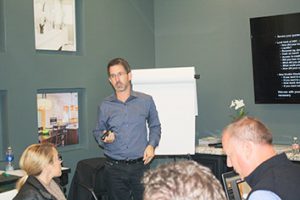Economists survey: 74% expect U.S. recession by end of 2021
The economists surveyed were skeptical about prospects for success of the latest round of U.S.-China trade negotiations. Only 5% predicted that a comprehensive trade deal would result.
The economists surveyed were skeptical about prospects for success of the latest round of U.S.-China trade negotiations. Only 5% predicted that a comprehensive trade deal would result.

Companies banged up during the Great Recession a decade ago have been preparing for the next slowdown by keeping workforces lean, adding technology and avoiding excessive debt.
Most analysts expect the U.S. economy to power through the rough patch, at least in the coming months, on the strength of solid consumer spending and a resilient job market.
For now, most economic signs appear solid. Employers are adding jobs at a steady pace, the unemployment rate remains near a 50-year low and consumers are optimistic.
Ten years after the official start of the downturn, entrepreneurs who survived the recession share painful memories and lessons they learned.
 The chief investment strategist for Fifth Third Bank says the economy is in the seventh inning of its recovery, which is "good news." But headwinds in the labor market could be limiting the potential for growth.
The chief investment strategist for Fifth Third Bank says the economy is in the seventh inning of its recovery, which is "good news." But headwinds in the labor market could be limiting the potential for growth.
Employers added 156,000 jobs in August, enough to suggest that most businesses remain confident in an economy now in its ninth year of recovery. Pay raises are still meager, however.
The U.S. economy rebounded sharply in the spring, growing at the fastest pace in more than two years amid brisk consumer spending on autos and other goods.
The gross domestic product grew at an annual rate of just 1.9 percent in the October-December period, a slowdown from 3.5 percent growth in the third quarter, the Commerce Department reported Friday.
The incomes of households outside the very top tier appear finally to be recovering from the Great Recession.
The vote in favor of a “Brexit” has shocked investors and sent stock markets plummeting around the world. Years of financial uncertainty lay ahead on a global scale as the U.K. and EU find their footing.
 If the U.S. economy were a compact car, it would be running on just three of four cylinders. That was the central message of a Fifth Third Bank expert at IBJ's 2016 Economic Forecast on Wednesday.
If the U.S. economy were a compact car, it would be running on just three of four cylinders. That was the central message of a Fifth Third Bank expert at IBJ's 2016 Economic Forecast on Wednesday.

While many CEOs are planning for the next fiscal year, a cohort of local executives is planning for the next fiscal downturn. Group members have their eyes on 2019, forecast by some economists to be the year the next economic contraction arrives.
Brad Davis and Paul Estridge Jr. belong to a select fraternity. They’re prominent Indianapolis homebuilders whose companies faltered during the housing downturn, only to re-emerge in another incarnation.
The U.S. economy has finally regained the jobs lost to the Great Recession, but a smaller percentage of Americans are actually working and median household income has declined considerably since before the recession.
Part-time and contract jobs in the past tended to rise during recessions and recede during recoveries. But maybe no longer: Part-time workers have accounted for more than 10 percent of U.S. job growth since the recession officially ended in June 2009.
Pay raises were a pipe dream for many Hoosiers last year—as the median wage in Indiana inched up 0.8 percent, to $31,990, according to federal data released this month.
The stock market highs over the past few months have many folks confused.
Sometimes the worst part of the economic forecasting I do is the sinking feeling that my predictions will be right.
Past its own New Year's deadline, a weary Congress sent President Barack Obama legislation to avoid a national "fiscal cliff" of middle class tax increases and spending cuts late Tuesday night in the culmination of a struggle that strained America's divided government to the limit.